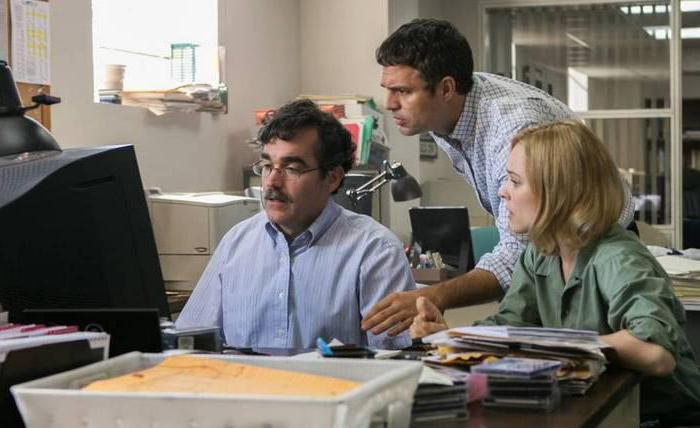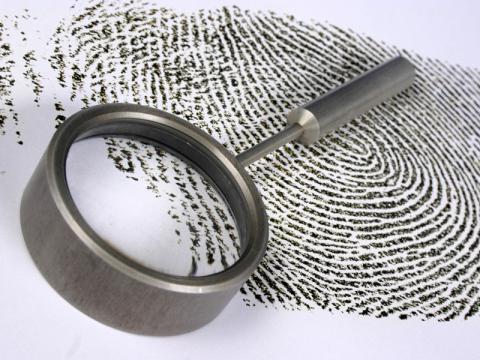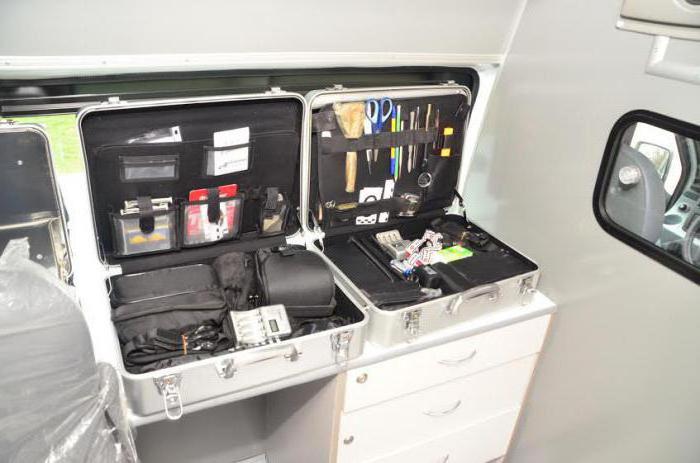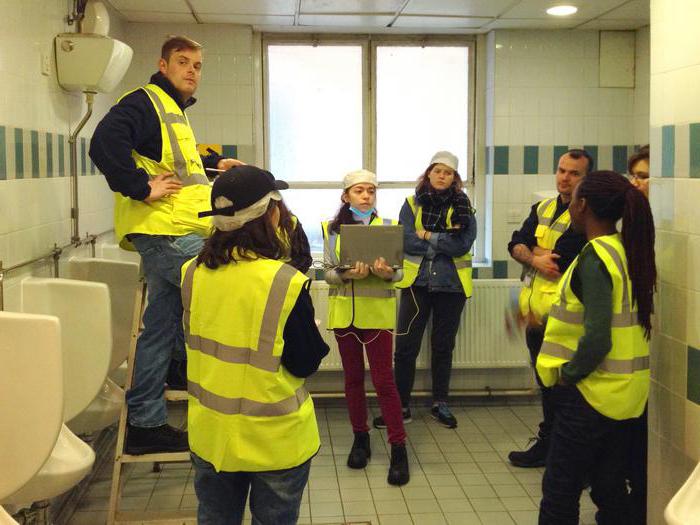The main organizational and most effective form of interaction between employees of the bodies involved in the disclosure of crimes is the investigative-operational group. Let us further consider this structure in more detail. 
Normative base
Current legislation does not determine the order, the grounds on which the creation of the investigative-operational group. There is also no explanation of the concept of SOG in the CPC. One of the most fully developed documents and, according to experts who were of particular importance in the process of strengthening interaction between the internal affairs departments, is the Instruction approved by order of the Ministry of Internal Affairs of the USSR of 02.20.1979. Other significant normative acts include the instructions of the Prosecutor General and the Ministry of Internal Affairs of the USSR . It was adopted in 1985. This instruction approved the standard instruction, in accordance with which the work of the investigative-operational group should be organized. Since 1993, a new document has been enacted. In the future, its provisions were taken into account in the development of other regulations.
Definition
There are several options for interpreting the concept of SOG. According to Shostak and Dubinsky, the investigative-operational group is an organizational form of interaction between employees of different units of law enforcement agencies. I. A. Tsokolov believes that SOG is an organizational formation of a temporary nature, based on departmental legal acts and legislation. This structure includes investigators, employees of operational devices and other specialists. The purpose of the SOG is the optimal organization of events that are carried out by crime detection officers. Some experts, however, note that the inclusion of the concept of “temporality” in the definition will be unnecessary. This is due to the fact that constant joint investigative-operational groups are quite common today. Meanwhile, the possibility and necessity of the functioning of such formations may disappear for several reasons. For example, the activities of the investigative-operational group will become unclaimed when the criminological situation changes, and rearrangements in the structure of law enforcement agencies themselves. Moreover, for the employees involved in these associations, this is not the main and only professional tasks. In this regard, it seems permissible to agree with the temporary nature of the SOG. 
Classification
In practice, the formation of:
- Duty investigation and operational groups. They provide an immediate response to reports of crimes committed. The tasks of this category of SOGs also include the production of urgent actions and search measures in hot pursuit. The group includes an investigator, employees of forensic and operational units, a dog handler. If necessary, representatives of other departments may also be included in the SOG.
- Specialized SOG. The composition of the investigative task force of this type includes employees of various units. Such SOGs are formed to disclose certain crimes, including those for which the perpetrators of the acts are not identified. The importance of this type of associations is difficult to overestimate. The legislator emphasizes the importance of a number of categories of objects under state protection. In this regard, the law enforcement officer is required to respond accordingly.It should be aimed at the most effective disclosure, and in some cases, the identification of certain crimes. These include, in particular, acts of terrorism, corruption, attacks on life, the health of citizens, minors, including other particularly serious violations.
- Targeted SOG. They are involved, as a rule, in the disclosure of acts in a particular case. The creation of an investigative-operational group of this type is especially in demand at the initial stages of the process of clarifying all the circumstances of what happened. The fact is that in the first stages there is a need to carry out a large amount of investigative actions to the maximum short term. The target SOG collects evidence during urgent events, identifies the perpetrators "in hot pursuit." Participants in the investigative task force carry out tasks in a relatively small area, with increased complexity of the case. They solve crimes with multiple episodes or in the presence of several perpetrators.
- Joint groups. Such associations are formed to disclose grave as well as especially grave acts committed, including organized crime groups, or dealing with a significant amount of materials. The composition of the investigative task force may include, as agreed, employees of the RF IC, the prosecutor's office, the FSB, the Ministry of Internal Affairs, etc.

Specifications
The urgent and paramount task of the duty groups when receiving a message about a crime is its suppression and taking measures to preserve traces of the act and to detain the violator of the law. In this case, the effectiveness of the measures, regardless of the form and method of receipt of information, will be affected by the level of knowledge of their duties and the initiative of employees. A prerequisite for the successful disclosure of a criminal act is the timely and proper organization of departure to the place, a qualified inspection of the territory of the incident. During these events, the investigative team collects information about the circumstances and the alleged perpetrator. The skillful use of the information obtained during the inspection in most cases provides the opportunity to establish the identity of the offender. Often, the information collected at the scene of the incident allows you to uncover the act "in hot pursuit."
Subjects
If we consider the duty groups, it must be said that the inclusion of investigators in them is, of course, necessary. There are several reasons for this. First of all, the operative has far from always the right to initiate criminal proceedings. This is due to the fact that this or that composition may not be related by law to its jurisdiction. The decision to initiate proceedings by the investigator is also explained by the fact that this employee can objectively and carefully consider certain circumstances. Moreover, he assumes full responsibility for the further disclosure of the crime. The problem of including an investigator in a group can be solved by forming permanent associations, immediately attracting an employee, including with his advance notification of a planned event. At the same time, his lawful and timely intervention can be considered the result of effective interaction between representatives of different departments.
Features of specialized SOG
In practice law enforcement have to disclose a variety of crimes. Among them, including the acts of past years. To clarify the circumstances of such crimes, a specialized investigative-operational group is formed. Employees of such an association are involved in the most complex cases. In this regard, increased professional requirements are placed on their professional qualities.A specialized investigative-operational group may deal with the disclosure of particularly grave assaults on a person committed in conditions of non-obviousness, terrorist acts or other acts that provoked a wide resonance in society. 
The specifics of employee interactions
The head of the investigative-operational group is personally responsible for the results of the measures taken. He has the right to make procedural decisions, organize the execution of certain procedures. The main tasks of interaction between employees should include:
- Ensuring the execution of emergency measures in the commission of crimes.
- Timely identification of perpetrators and bringing them to justice.
- Disclosure of criminal acts.
- Objective, comprehensive and complete disclosure of criminal cases.
- General work aimed at tracing hidden persons.
- Identification, suppression of illegal acts, taking measures to prevent them.
- Implementation of measures aimed at compensation for material damage caused to organizations, regardless of their form of ownership, and citizens by criminal acts of individuals.

The current CPC does not provide for a comprehensive, complete and objective study of the circumstances of the case. Despite this, it seems that without taking into account this condition, the investigative-operational group of the Ministry of Internal Affairs cannot function efficiently and purposefully. The existing CPC provides for the possibility of forming only SG. The investigation team carries out procedural work, attracting employees to it. body of inquiry. The latter are often involved directly in the conduct of certain events, the results of which are of significant evidence. At the same time, operational support of the procedures takes place. It also allows you to obtain procedural evidence, which is subsequently implemented in the prescribed manner. Experts draw attention to the fact that the lack of normative regulation applied in practice of the participation of investigators in solving crimes on an ongoing basis within the framework of the functioning of the SOG can affect the quality and speed of revealing the circumstances of the case.
Important point
The investigative-operational police group is formed, as a rule, for the successful solution of labor-intensive, complex, urgent tasks, the implementation of a large volume of activities in cases with many episodes, for crimes committed by several persons in conspiracy, as well as in other cases of significant social significance. Cooperation of labor will be effective only when it is based on close official interaction of members of brigades, commissions, units. This, in turn, involves the fulfillment of tasks according to one agreed plan. The implementation of the tasks is carried out through the implementation of coordinated actions with clearly defined responsibilities, mutual assistance, mutual understanding, mutual awareness and support. As part of the SOG, support should be as complete as possible. 
Key principles
The formation of SOG is based on a number of provisions. The key principles for creating groups include:
- Timeliness of education.
- The interdepartmental nature of their formation.
- The most appropriate and clear distribution of areas for events.
- Competent organization of not only the process of revealing a specific crime, but also the prevention of similar illegal acts.
Additional faces
In addition to the investigative-operational group, at the scene of the incident some other production participants may also perform certain functions. They are, for example, witnesses, representatives of commercial organizations, institutions, enterprises in whose territory the inspection is carried out. The participation of these entities is regulated by Art. 170 Code of Criminal Procedure.In order to avoid difficulties in choosing witnesses, to eliminate fears in attracting subjects interested in the results of the investigation, as well as the likelihood of their disclosure of the results of the inspection, it is recommended to involve these persons before leaving for the place. In Art. 170, part 3 of the CPC provides for a number of cases in which a procedural action may be carried out without the participation of these entities.
Another category of people involved in the examination are the accused, suspects, eyewitnesses, and victims. These subjects may be necessary and useful in view of their awareness of the circumstances of what happened. When a suspect / accused is involved in the examination, a defender may be present with him in the process of carrying out the procedural measure. If necessary, a translator is involved in the procedure. The possibility of his participation is regulated by Art. 59 Code of Criminal Procedure. Subjects that may be involved in the inspection also include support staff. It is entrusted with the obligation to provide technical assistance to the staff of the investigative-operational group. They, in particular, can be entrusted with excavations, clearing debris, guarding the territory of the inspection and so on. Representatives of institutions, enterprises, commercial structures are useful during the inspection, because they have the necessary information about the scene of the incident, documentation, have access to the premises. They can also organize support work. 
Conclusion
The concept of “interdepartmental” or “joint investigative-operational group” was first put into practice in May 1995. These definitions were used by order of the Prosecutor General, the Ministry of Internal Affairs, and the FSB. The Tax Police Department of the Russian Federation was also involved in the approval of the relevant regulations. The development of new forms of cooperation, the introduction of specialization of employees, the expansion of experience in the formation of SOG in specific areas, which have proven themselves in the practice of organizing special units, have led to the improvement of by-laws. The creation of investigative-operational groups is of particular importance in the framework of the implementation of procedures aimed at solving crimes.
It must be said that the interaction of employees of different divisions, organized in accordance with a clearly developed plan, with a concrete and competent distribution of responsibilities allows us to solve both urgent tasks as soon as possible and to collect a complete evidence base for special categories of crimes. The work of investigative-operational groups is essential in the investigation of crimes committed in a relatively long time. In all cases, various experts are involved in procedural measures: criminologists, experts, etc. The immediate departure of SOG to the crime scene ensures the preservation and fixation of the traces of the act. This, in turn, allows you to quickly establish all the circumstances of what happened, and in some cases to catch the perpetrators "in hot pursuit."
